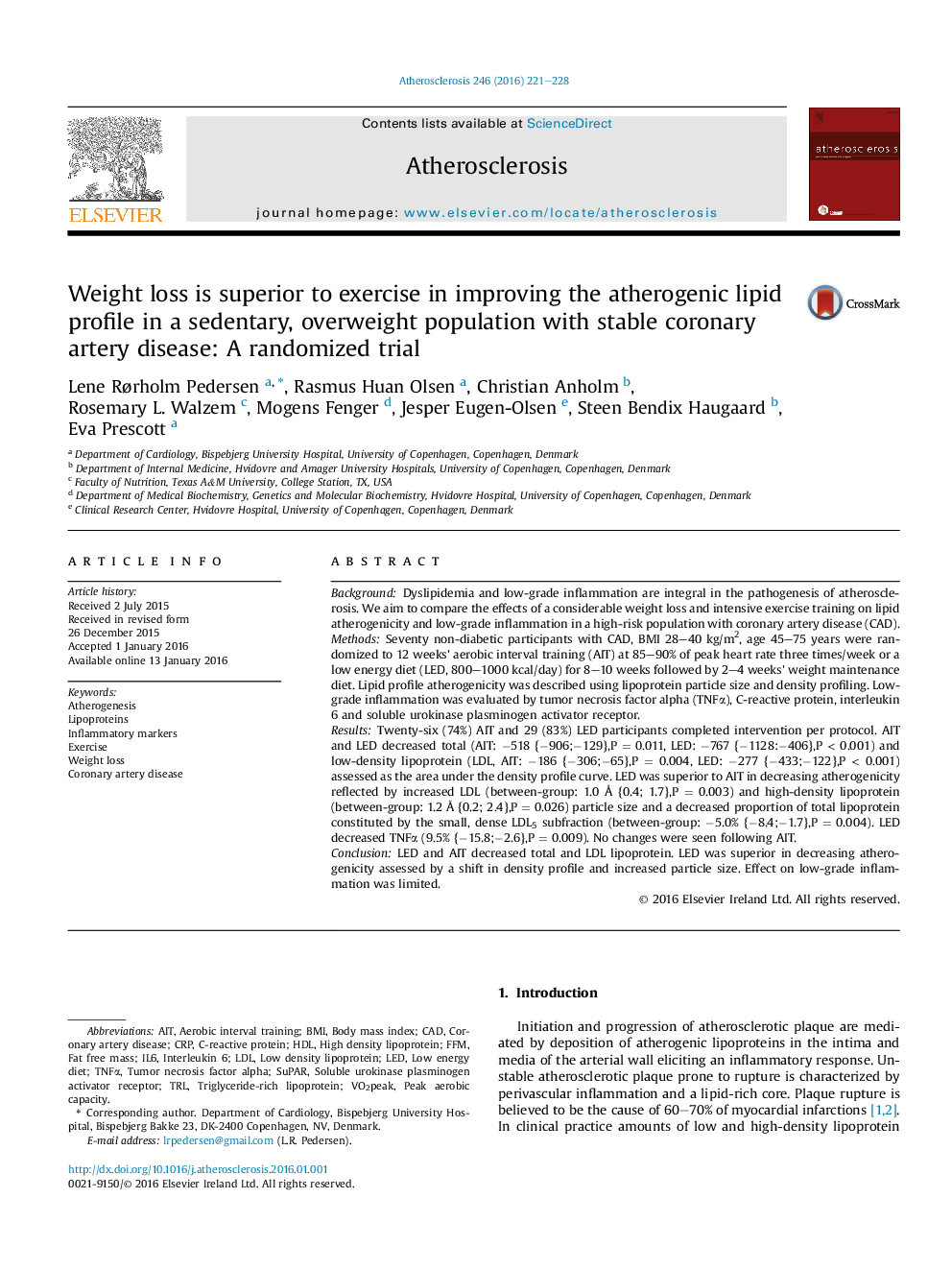| کد مقاله | کد نشریه | سال انتشار | مقاله انگلیسی | نسخه تمام متن |
|---|---|---|---|---|
| 5943440 | 1574719 | 2016 | 8 صفحه PDF | دانلود رایگان |
- 70 participants were randomized to either weight loss or aerobic interval training.
- Atherogenicity was evaluated using lipoprotein density and particle size.
- Both weight loss and exercise decreased total and low-density lipoprotein.
- Weight loss elicited a shift toward a less atherogenic lipid profile.
- Overall, no marked effect was seen on low-grade inflammation.
BackgroundDyslipidemia and low-grade inflammation are integral in the pathogenesis of atherosclerosis. We aim to compare the effects of a considerable weight loss and intensive exercise training on lipid atherogenicity and low-grade inflammation in a high-risk population with coronary artery disease (CAD).MethodsSeventy non-diabetic participants with CAD, BMI 28-40 kg/m2, age 45-75 years were randomized to 12 weeks' aerobic interval training (AIT) at 85-90% of peak heart rate three times/week or a low energy diet (LED, 800-1000 kcal/day) for 8-10 weeks followed by 2-4 weeks' weight maintenance diet. Lipid profile atherogenicity was described using lipoprotein particle size and density profiling. Low-grade inflammation was evaluated by tumor necrosis factor alpha (TNFα), C-reactive protein, interleukin 6 and soluble urokinase plasminogen activator receptor.ResultsTwenty-six (74%) AIT and 29 (83%) LED participants completed intervention per protocol. AIT and LED decreased total (AIT: â518 {â906;â129},P = 0.011, LED: â767 {â1128:â406},P < 0.001) and low-density lipoprotein (LDL, AIT: â186 {â306;â65},P = 0.004, LED: â277 {â433;â122},P < 0.001) assessed as the area under the density profile curve. LED was superior to AIT in decreasing atherogenicity reflected by increased LDL (between-group: 1.0 à {0.4; 1.7},P = 0.003) and high-density lipoprotein (between-group: 1.2 à {0.2; 2.4},P = 0.026) particle size and a decreased proportion of total lipoprotein constituted by the small, dense LDL5 subfraction (between-group: â5.0% {â8.4;â1.7},P = 0.004). LED decreased TNFα (9.5% {â15.8;â2.6},P = 0.009). No changes were seen following AIT.ConclusionLED and AIT decreased total and LDL lipoprotein. LED was superior in decreasing atherogenicity assessed by a shift in density profile and increased particle size. Effect on low-grade inflammation was limited.
Journal: Atherosclerosis - Volume 246, March 2016, Pages 221-228
